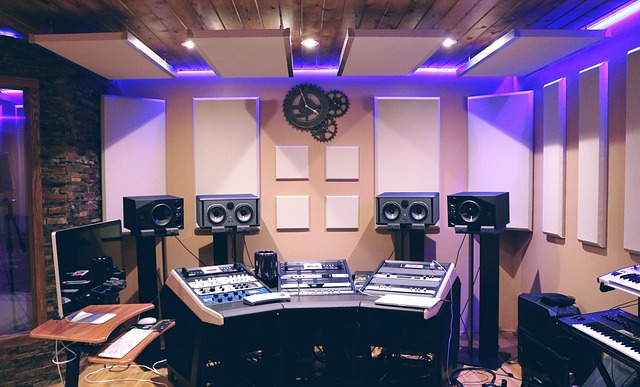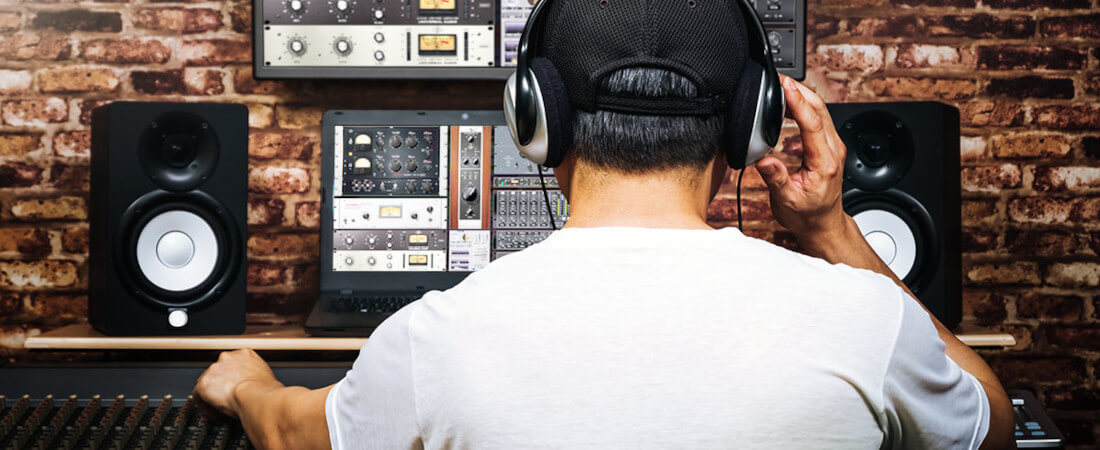STUDIO ACOUSTICS
The significance of acoustics cannot be overstated when it comes to music or home studio environments. The way sound interacts with the physical space has a profound impact on the quality and perception of audio recordings, mixing, and listening experiences. Acoustic considerations encompass a range of factors, including room dimensions, materials, treatment, and placement of sound-absorbing and reflecting surfaces. Whether you are a professional musician, audio engineer, or simply an enthusiast looking to create a high-fidelity listening environment, understanding and optimizing the acoustics of your music or home studio is essential. In this article, we will explore the reasons why acoustics play a crucial role in these settings and how they contribute to achieving optimal sound reproduction, accurate monitoring, and overall sonic excellence. By delving into the importance of acoustics, we can appreciate how it shapes the way we perceive and enjoy music in our studio spaces.
Why Do Most Rooms Require Acoustic Treatment to Sound Good?
Most rooms, whether they are purpose-built studios or home environments, require acoustic treatment to sound good due to several reasons:
-
Reverberation Control: Every room has its inherent acoustic characteristics that influence how sound waves behave within the space. Uncontrolled reflections and excessive reverberation can create a muddled and blurred sound, making it challenging to hear individual elements in a mix accurately. Acoustic treatment, such as the strategic placement of sound-absorbing panels, helps control and reduce unwanted reflections, resulting in a clearer and more defined sound.
-
Frequency Response Balancing: Rooms can have uneven frequency response, meaning certain frequencies may be amplified or attenuated due to room resonances and standing waves. These irregularities can result in a mix that sounds imbalanced, with some frequencies dominating or getting lost. Acoustic treatment, including bass traps and diffusers, helps address these issues by minimizing resonant peaks and dips, leading to a more accurate and balanced frequency response across the audible spectrum.
-
Imaging and Stereo Soundstage: Proper acoustic treatment contributes to a well-defined stereo image and soundstage. When sound waves bounce off surfaces in an uncontrolled manner, it can disrupt the perception of depth, width, and localization of instruments and vocals. By using diffusers and absorbers strategically, the room’s acoustics can be optimized to enhance imaging, enabling a more immersive and realistic listening experience.
-
Minimizing External Noise and Disturbances: Acoustic treatment also plays a role in isolating the room from external noise sources. Unwanted sounds, such as traffic noise, HVAC systems, or footsteps from adjacent rooms, can degrade the quality of recordings or mix monitoring. Properly placed absorptive materials, coupled with adequate soundproofing techniques, help reduce external noise and ensure a quieter and more controlled listening or recording environment.
-
Enhancing Recording Accuracy: In recording scenarios, accurate monitoring is crucial to capture and reproduce sound faithfully. Without proper acoustic treatment, the room’s reflections can interfere with what is being recorded, leading to inaccurate monitoring decisions. By minimizing unwanted reflections and optimizing the room’s acoustics, recording engineers can make more precise judgments about microphone placement, EQ settings, and overall tonal balance, resulting in better recordings.
-
Consistency Across Listening Environments: For producers and engineers working on music intended for various playback systems and venues, it is essential to ensure that the mix translates well across different listening environments. By addressing the room’s acoustics and creating a more controlled and accurate monitoring environment, the mix decisions made in that space are more likely to translate reliably to other playback systems, ensuring consistent sonic quality across different platforms.
In summary, most rooms require acoustic treatment to sound good because it helps control reflections, balances the frequency response, enhances stereo imaging, minimizes external noise, improves recording accuracy, and ensures consistency across different listening environments. By investing in proper acoustic treatment, music creators can optimize their studio spaces and achieve a more accurate, pleasing, and professional sound reproduction.
Acoustics elements
Different types of acoustics used in home and professional music studios include:
-
Reflection Control: Reflection control acoustics aim to manage and control the reflections of sound waves within the room. This involves strategically placing absorptive materials such as acoustic panels, bass traps, diffusers, and acoustic foam on walls, ceilings, and corners to minimize unwanted reflections and reverberations.
-
Bass Management: Bass management is essential for controlling low-frequency sound waves in a room. Bass traps are designed to absorb or diffuse low-frequency energy and reduce resonances and standing waves. They are typically placed in corners or along the walls to effectively manage bass response and prevent boomy or muddy bass reproduction.
-
Diffusion: Diffusion acoustics involve scattering sound waves in various directions to create a more spacious and immersive listening experience. Diffusers are specially designed panels that scatter sound reflections instead of absorbing them directly, helping to enhance the sense of depth, stereo imaging, and overall soundstage within the room.
-
Soundproofing: Soundproofing acoustics focus on isolating the studio space from external noise sources and preventing sound leakage. This may involve using materials with high sound transmission loss, such as specialized insulation, double or triple-layered walls, acoustic doors, and windows. Proper soundproofing helps maintain a quiet and controlled environment for recording and mixing without disturbances from outside noise.
-
Room Mode Correction: Room mode correction addresses the specific resonant frequencies and standing waves that can occur in a room. It often involves using bass traps, specifically tuned absorbers, or digital room correction systems to mitigate problematic resonances and improve the overall frequency response balance in the space.
-
Live Room Acoustics: In larger studios that have dedicated live rooms for recording instruments or vocals, the acoustics are designed to create a desirable ambience and natural sound. Live room acoustics may involve incorporating reflective surfaces, diffusers, and carefully positioned microphones to capture the desired sound characteristics and room ambience for recordings.
-
Nearfield Monitoring: Nearfield monitoring acoustics focus on optimizing the listening experience at the mix position. This may involve positioning the speakers at an appropriate height and angle, using acoustic isolation pads or stands, and ensuring that the room reflections are minimized in the immediate listening area to provide accurate and detailed sound representation.
It’s important to note that the specific combination and implementation of these acoustics will vary based on the size of the room, its purpose, and the desired sound objectives. The acoustics used in home and professional music studios are tailored to create an optimal listening and recording environment that enhances sound accuracy, clarity, and the overall quality of the audio produced.
Frequently asked questions
Q: How can I do good music mixing when my room is not soundproof and with no acoustics?
A: Yes, it is possible to make good mixes using open-back headphones, but it requires careful consideration and compensating for their limitations. Open-back headphones can provide excellent detail and accuracy, allowing you to hear subtle nuances in your mix that may not be as apparent on other monitoring systems. This level of precision can be advantageous for fine-tuning individual elements and achieving a balanced mix. To compensate for the lack of room acoustics and stereo imaging, it is crucial to regularly reference your mix on other monitoring systems, such as studio monitors or car speakers. This helps ensure that your mix translates well across different playback environments. Understanding the frequency response of your open-back headphones is essential. Take note of any potential frequency biases and make adjustments accordingly to achieve a more neutral and balanced mix. Additionally, utilizing reference tracks mixed on different systems can serve as a valuable benchmark for tonal balance and overall sound quality, providing a point of comparison throughout the mixing process. While open-back headphones can be a useful tool, it is still recommended to periodically check your mix on properly treated studio monitors or in a professionally treated room to ensure that it translates accurately and consistently across various listening environments.
Q: What are bass traps?
A: Bass traps are acoustic treatment devices used in music studios to address low-frequency issues and improve the accuracy of sound reproduction. They are specifically designed to absorb or diffuse low-frequency energy and mitigate resonances and standing waves that can cause an uneven bass response in a room. By strategically placing bass traps in corners or along walls, studios can achieve a more balanced and controlled bass performance, resulting in a tighter and more accurate low-end representation in recordings and mixes.
Blog Articles
Mixing In Key Or Harmornic Mixing
Mixing in key refers to the practice of aligning the musical elements in a mix to ensure they are harmonically compatible. It involves considering the key or musical...
Using a reference track to improve your mixes
» Setting a benchmark » Developing a better ear » Improving your techniques » Avoid common mistakes Mixing is a complex process that involves balancing the different...
Using a limiter or clipper in music mixing and production
WHEN AND HOW TO USE A LIMITER MIXING MUSICAudio mixing and production involve a range of techniques and tools to shape the sound of a track. One essential tool in this...
Extras
Blog
Other News
Contact Page
About Us



